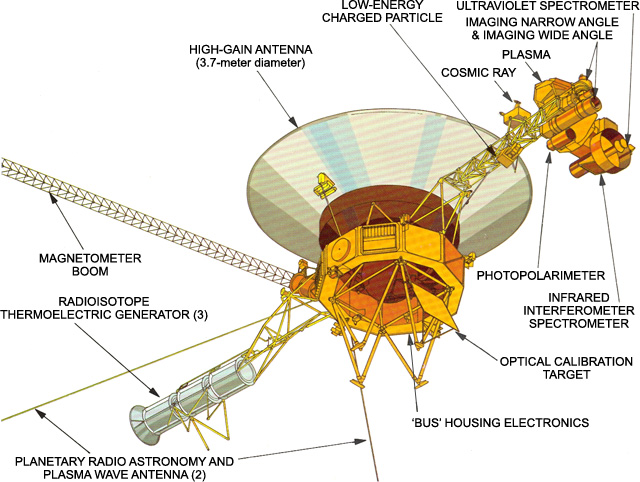Reaching for the Stars - the Voyager Space Mission
In 1977, two spacecrafts were blasted into space that would explore the outer reaches of our solar system. Remarkably, forty years later, they are still operational.
These spacecrafts, named Voyager I & II, are the culmination of centuries of human innovation. Without mathematics, jet propulsion, an understanding of gravity and general relativity, electromagnetism, electronics, and a whole host of other critical concepts, this mission would be impossible.
One of the earliest photos the Voyager I probe sent back speaks to just how impactful the data is. The image, which pictures both the Earth and the Moon together in the same frame, is the first of it's kind.
Less than 500 years ago, Copernicus' assertion that the Earth is not the centre of the universe was a highly controversial one. He proposed that the sun is the centre of the universe, and while this is far from the reality of our place in the cosmos, it was a major step forward in our thinking (even though this was not the first time this idea had been proposed).
Fast forward to 1977, and we are able to take a picture of our world from 7.25 million miles away. That is a truly remarkable achievement of the scientific method and humanity as a whole.
This picture was just a small taste of what was to come. Voyager I would then fly by Jupiter and Saturn, while Voyager II, on a different path, would pass by Jupiter, Saturn, Neptune and Uranus.
The Voyager mission made some groundbreaking discoveries on its flyby of Jupiter that we take for granted today. These discoveries include:
- the great red spot is a cyclone like storm
- Jupiter's moon, Io, has active volcanoes
- there is lightning on Jupiter
- Jupiter's moon, Ganymede, shows evidence of tectonic activity
- Jupiter's moon, Europa, shows signs of a liquid ocean below it's icy surface
All of these discoveries suggest that the processes on Earth, while finely tuned for life, may not be unique. If there are liquid oceans, lightning, volcanoes, and tectonic activity on planets and moons so close by, it may be that worlds such as ours are scattered throughout the universe. Prior to these discoveries, we had almost no information on how other planets and moons behaved outside of their orbits.
We also learned a great deal about Saturn (pictured above). Saturn's moon, Titan, was discovered to have a thick Earth-like atmosphere composed of Nitrogen. This suggests that there could be oceans of liquid Methane and Ethane on the surface of Titan (those molecules have far lower freezing points than water). This discovery is yet another way celestial bodies within our very own solar system are in some ways similar to the Earth.
Voyager II then went on to make important discoveries of Neptune and Uranus, including new moons and the measurement of Uranus' temperature, a startling -216 degrees Celsius.
When the Voyager spacecraft launched, they were designed to last 5 years. Now 40 years later, they are still operational and making important discoveries about the boundaries of our solar system.
The mission has entered it's final, interstellar phase.
Our solar system is protected by our sun in a number of different ways. One of those is from solar wind, a flow of charged particles outwards from the sun. These particles move at supersonic speeds, until they reach a point where interstellar winds push back. At the point where the particles from the sun slow below supersonic speeds is a region we refer to as the termination shock phase.
In December 2004, Voyager 1 crossed the Termination Shock at 94 times the distance from the Sun to the Earth. Voyager 2 crossed shortly thereafter. They are now in a region called the Heliosheath, where the particles slow abruptly and heat up due to resistance from extrasolar plasma. We are uncertain how large this region is until the boundary into true, interstellar space beyond the Heliopause.
While this was and is a scientific mission, there is another aspect to the mission. Since both spacecraft have achieved escape velocity, meaning enough speed to escape the pull of our sun's gravity, they will travel for millions and possibly billions of years in space. They could outlive our civilization and meet their end very far away from our solar system.
Attached to both satellites is a golden record, with images and sounds from Earth. They are meant as a sort of a time capsule in case any intelligent species were to find them in the future. While this seems unlikely, it is hopeful, and embodies the spirit of our species as we reach for the stars.
Article by Rick Sturch.
Sources:










Comments
Post a Comment